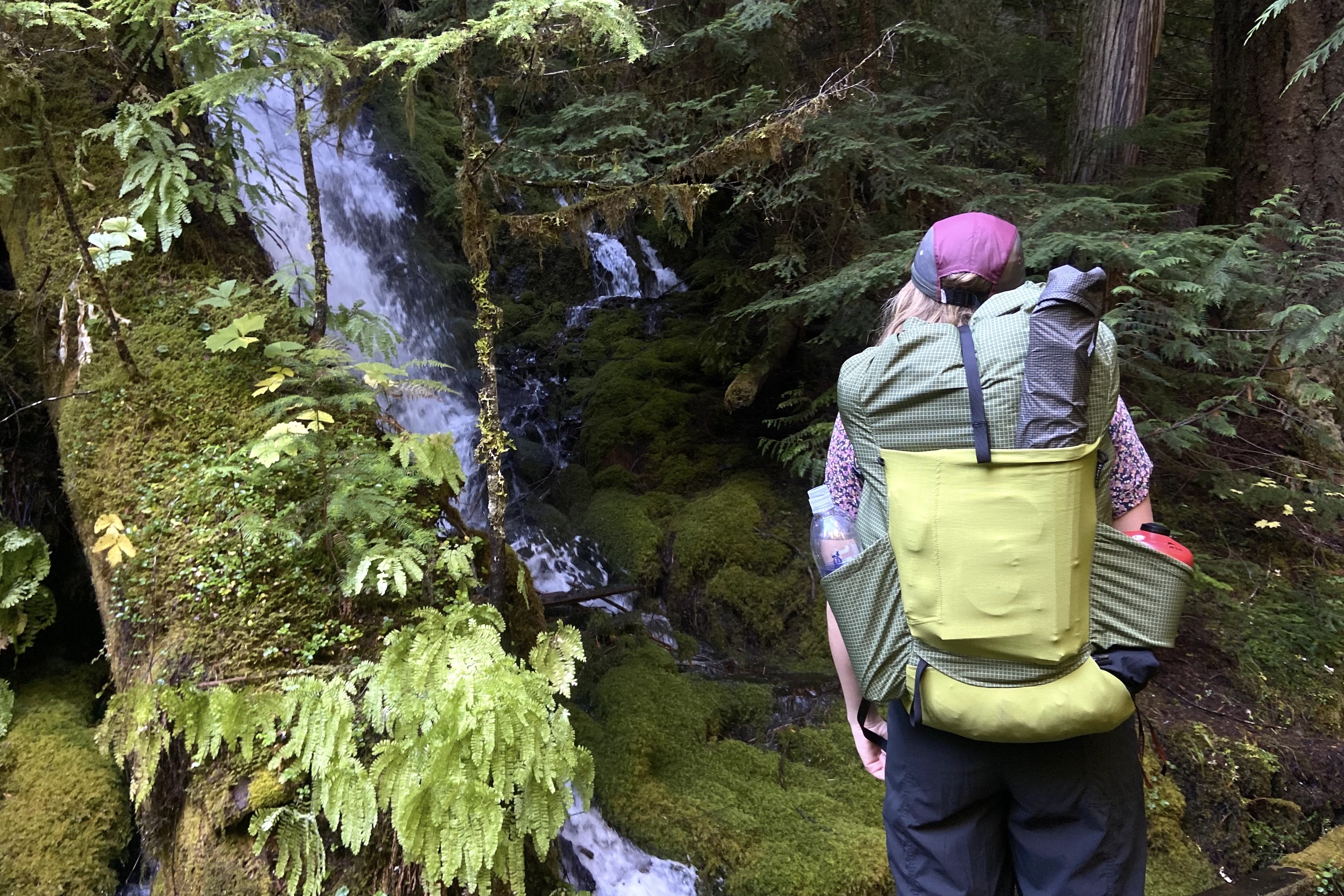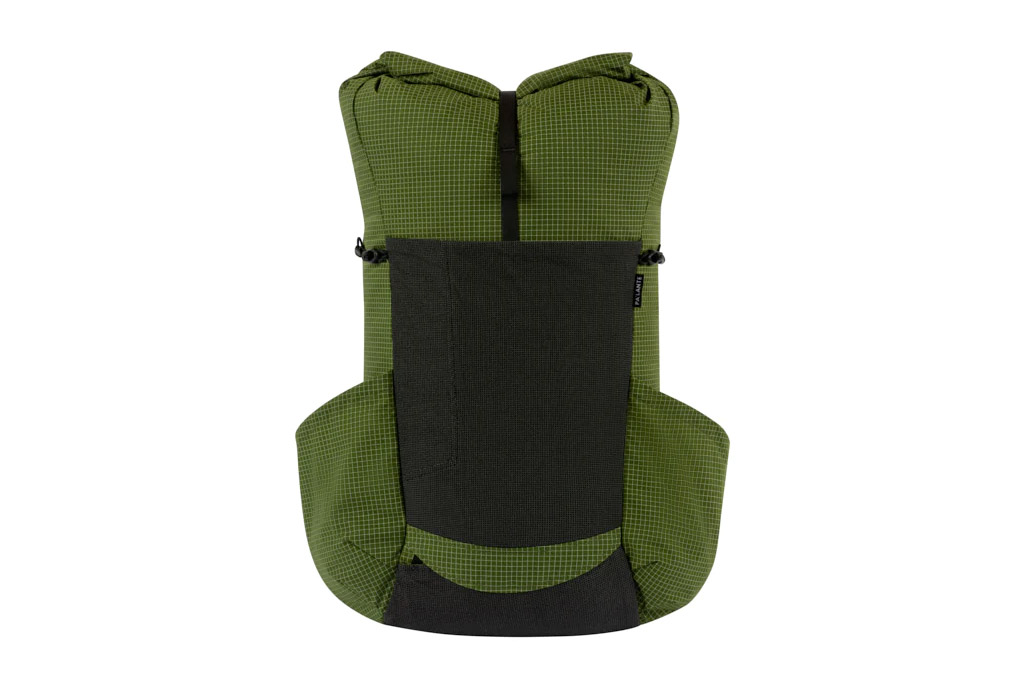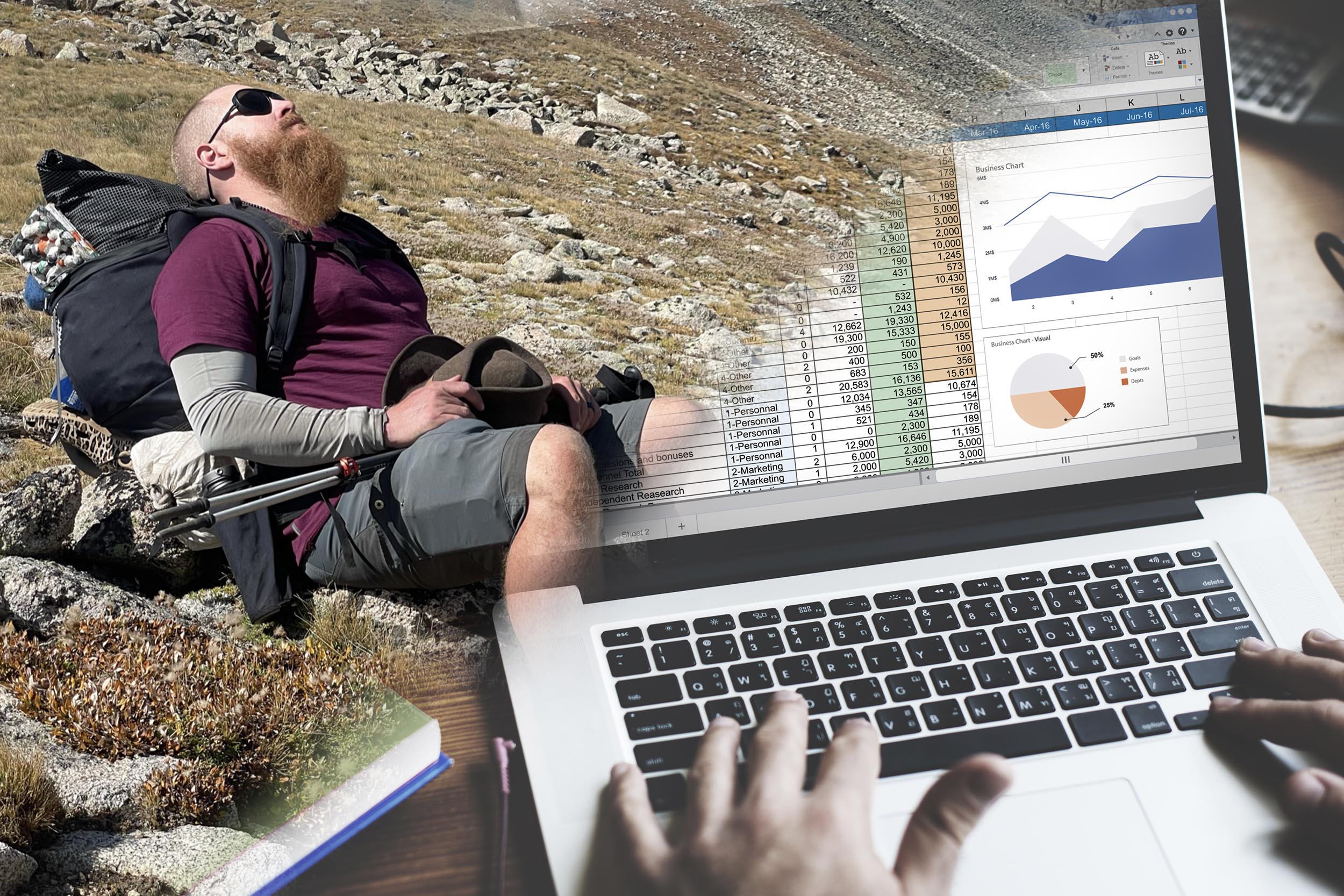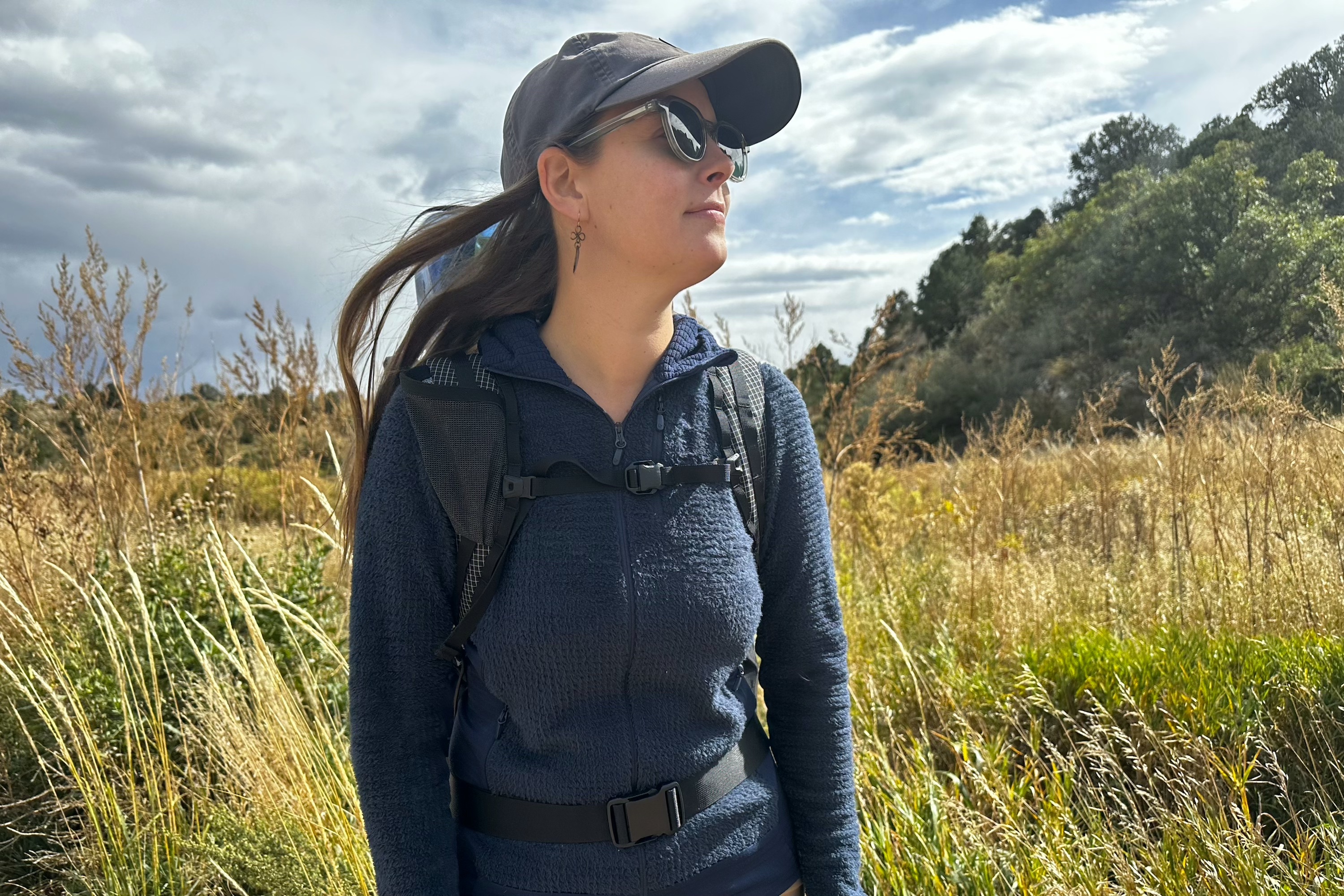If there’s one thing that the backpacking community loves to quibble about, it’s ultralight gear. Do you cut your toothbrush in half? Is extra underwear too much added weight? Do you share a pot — and a spoon? Maybe you’re a user of the (in)famous crotch pot? Yes, ultralight folks can get very carried away.
But have no fear, I bear no allegiance to either side. I tend to fall evenly in the middle; seeking out gear that is light, but comfortable enough; durable, but not astronomically expensive. If you find gear that is safe, in your budget, and gets you out there — go for it. Ignore the “Gear Shamers.”
In short: For those who have a foot in either camp like myself, Pa’lante Packs are worth putting on your radar. And for those specifically looking to invest in a new pack, the 43L Pa‘lante Desert (1.2 pounds, $240) is a great introduction to the ultralight world, or even the “ultralight to midweight” category. Pa’lante is a well-loved fixture in the thru-hiking community, but the brand is small, which means word of mouth and geeky gearheads (that’s me) come in to spread the love.
I was curious to see how the pack stood up to a shoulder-season gear load and unpredictable conditions (in the PNW, that definitely includes water and moisture). Notably, while some of my gear is ultralight, many items are not. Would this pack still function and work well for my needs?
If you’re shopping for an ultralight backpack, compare the Pa’lante Desert Park to others on GearJunkie’s Guide to the Best Ultralight Backpacks.
- Materials: 210D UHMWPE gridstop, 400D ultraweave, UHMWPE grid mesh, spacer mesh, 10mm Evazote foam, aluminum g-hook, ladder lock buckles, tension lock, shock cord
- Webbing: 40mm nylon hipbelt, 15mm webbing straps
- Type: Rolltop cinch closure
- Sizes: 2 torso sizes (17" and 19")
- Weight: 19.2 oz. (17-inch size)
- Colors: 4 (white, pine, lichen, and eggplant)
- Price: $240
Pros
- Lightweight, yet sturdy
- Great stashable outside pockets, fit for up to 4 Smartwater bottles
- Extra stash pockets on front
- Can flex from beginner ultralight to standard backpacking adventures
- Impressive durability for the weight
Cons
- The outside pockets (made from an ultraweave material) show wear and tear prematurely and are harder to clean
- The shoulder strap can rub into armpits when larger items (like a phone) are placed in the chest pocket(s)
- No interior pockets
- Can't fit a bear canister
- Side cinch bands feel flimsy
Pa’lante Desert Pack Review
Overview
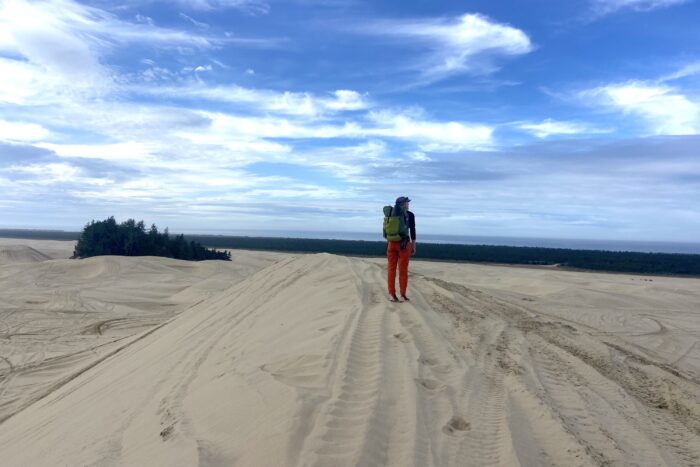
I tested the Desert Pack in Oregon’s wet climate and shoulder season on backpacking trips in the Umpqua National Forest and along the Central Coast. We had river crossings and long sandy expanses, muddy trails, and waterfalls. Here’s what I carried on those trips:
Trip 1: Approximate Trail Weight – 18-20 lbs.
- Bear Vault BV425: 1 lb., 2 oz.
- Food and snacks for two hikers for 2 days (approx. 3-5 lbs.)
- MEC Spark 2.0 2-person tent: 3.8 lbs.
- Two 1L Smartwater bottles and LifeStraw filtration: 4 lbs.
- Therm-a-Rest Neo Air XLite: 13 oz.
- Marmot Nanowave 55-degree sleeping bag: 1 lb., 12 oz.
- Sea to Summit Thermolite Reactor sleeping bag liner: 14 oz.
- MSR Whisperlite Pocket Rocket, small pot, and fuel: 1 Ib.
- Miscellaneous items: headlamps, extra phone charger, knife, sunglasses, hat
- Clothes: Salomon puffy, extra socks, baselayers, rain gear
Trip 2: Approximate Weight – 16 lbs.
- Food and snacks for two hikers for 3 days (approx. 5 lbs.)
- NEMO Dragonfly Osmo 1-person Ultralight Backpacking tent: 2 lbs., 10 oz.
- Two 1L Smartwater bottles and LifeStraw filtration: 4 lbs.
- Sleeping pad
- Miscellaneous items: headlamps, knife, sunglasses, small camera, candy, hat
- Clothes: Salomon lightweight puffy, extra socks, baselayers, rain gear
- Marmot Nanowave 55-degree bag: 1 lb., 12 oz.
- Sea to Summit Thermolite Reactor sleeping bag liner: 14 oz.
- MSR Superfly Stove 4.6 oz. and 2.5L pot: 10.1 oz.
The Desert Pack is bomber. Don’t get me wrong — you can’t lug around an endless amount of gear, or comfortably fit a full-size bear can in its belly, but you can fit an array of items to get you through your trek comfortably.
Dabbling in Ultralight: Testing the Pa’lante Pack
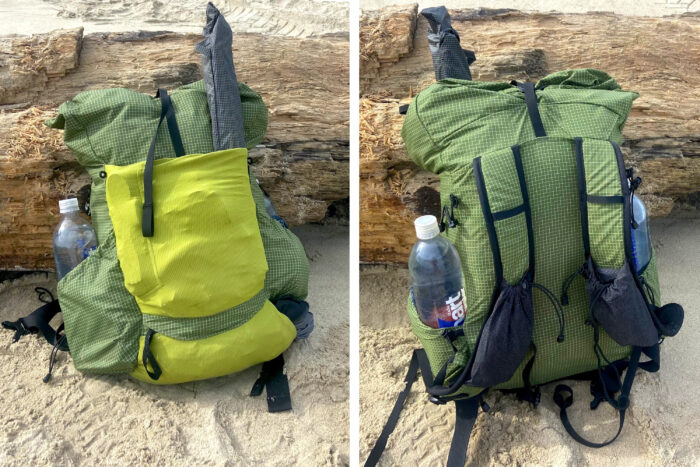
For someone dabbling in the ultralight world, you’ll find yourself perfectly capable of swapping out ultralight gear for non-ultralight gear here and there, within reason. (An example: fitting a bigger tent or more bulky sleeping bag in the pack is doable.) For full-blown ultralight backpackers, this pack is large enough for a long string of hiking days, especially if you can leave the bear can at home. Thru-hikers rejoice!
This pack wins in its attention to detail: seriously, the pockets and hidden well-thought-out features (like the low-profile hydration port) are fantastic. Keeping snacks or rain gear in the lower stash pocket is chef’s kiss. My biggest critique, the pack’s cinch bands could be better (currently, the cinches are fully elastic and feel flimsy against a full pack).
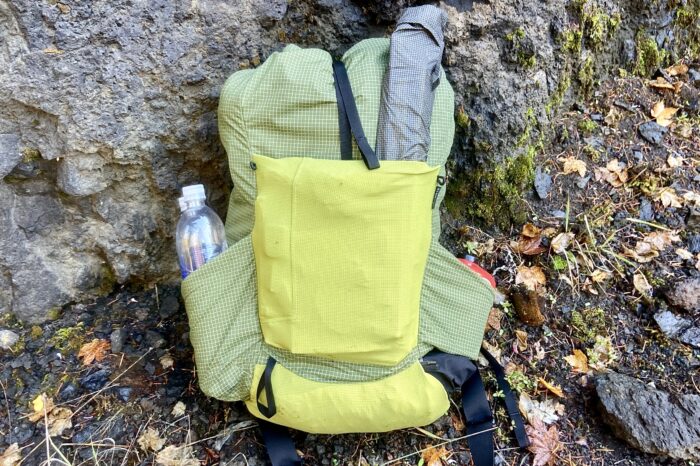
The Desert Pack is intriguing for its intuitive pocket placement (quick-access bottom and side pockets, and tent stake pocket!), frameless design, and stashable hip belt. Overall, I felt like all the features fit well together. The stashable hip belt was surprisingly useful and supportive and tucks away nicely.
The actual back of the pack and straps have enough padding to mimic a regular pack if you pack the inside correctly. The two front straps also feature two pockets large enough to hold 1L Smartwater bottles or, as I used them for: an iPhone, small film camera, and a bag of Jolly Ranchers.
While I really enjoyed these pockets, items in the front would often rub against my armpits in certain positions, I assume because of my smaller size. The pack comes in 17” and 19” capacities (I wore the 17” model and am about 5’ 5”).
The pack also has the capabilities to carry an ice axe, but if I were you, I’d opt for an ultralight mountaineering-specific pack for big or more technical trips, like the Headwall from Hyperlite Mountain Gear. Pockets for avalanche gear or climbing gear are definitely missing in this pack, which makes sense, because it is built for ultralight backpacking.
Waterproofing and Durability
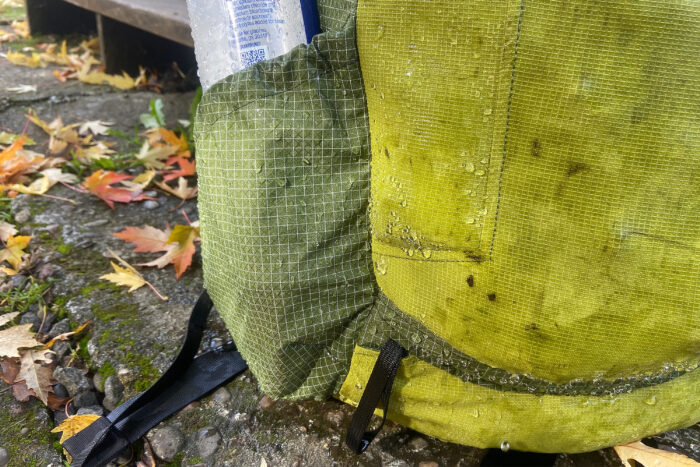
Durability-wise, this pack stands up to weather well. Besides the perpetual damp of a PNW October, I also fully soaked and sprayed the pack with my garden hose (full downpour over head and at the sides) to see how well the pack would keep my items dry.
The fabric repelled water well, but, as expected, the mesh pockets fully soaked through. The cinch top let in a small amount of water when the pack was sitting and allowed some water to pool. Overall, I wouldn’t be worried about the occasional rainstorm. But, if frequent wet weather was in the forecast, I would pack a poncho (pack cover).
Pa’lante Desert Pack: My Verdict
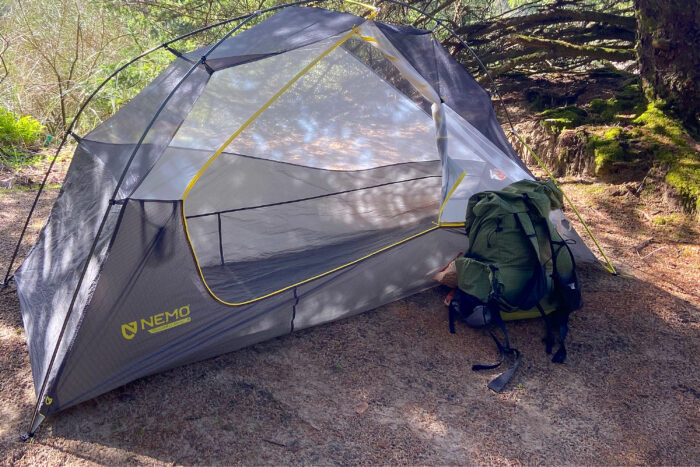
If you’re truly aiming to cut down on weight without sacrificing convenience, the Pa’lante Desert Pack is a great option. While it does have some things I’d change, where it excels most is where many other ultralight packs fail — functional pocket placement and durability at a low weight.
Sure, you could hike with a smaller (or marginally lighter) pack, but the comfort and durability that Pa’lante provides is top-class. It’s durable, as it can stand up to high levels of dirt, wind, sand, and water. And at under $250, it’s one of few ultralight packs that won’t break the bank. Oh, and bonus points for supporting a small business.
